

The Classic
Storytelling Class






Your writing journey starts here
Suitable for writers at all stages who want to master the foundations of fiction writing. But perfect for beginners wishing to explore the art of storytelling, discover their voice and find their big idea.
The secret to being a writer?
It’s not innate talent. It’s not fancy words. It’s a story.
Because what readers want is a story they can’t put down.
Even better? A good story (almost) writes itself.
It all starts (and ends) with the story, and this class will help you find it.


Reasons to NOT get started
There are so many reasons why potentially brilliant writers never fulfill their dream of capturing that story, or publishing that novel.
Which are yours?
But I don’t have a story!
Then you’re in the right place. The Classic Storytelling Class is designed precisely to kindle your ideas, and ignite your voice.
You don’t need to have all the answers—or come to think of it, any of them. Stories are about questions. One question after another.
We’ll have you asking the right questions, in the right order.
And taking the right steps, in the right direction on your journey to becoming a writer.
But I’m not sure I have any talent!
Not all writers suffer from imposter syndrome. Only the good ones.
But can we let you in on a little secret?
Storytelling can be learned.
Writing is not a God-given gift. It’s not something you are born with, or can or can’t do. It’s something you learn, because you want to learn it.
The story doesn’t happen to you. You happen to the story.
But what if I don’t have the time?
A lot can happen in one hour…
With our Classic Storytelling Class, you have a year to complete 55 lessons.
Each lesson is around 30 minutes long. But let’s add an extra 30 minutes for thinking time. One hour.
Should you want to immerse yourself in the craft, we recommend setting aside one hour a day just for you and your writing. (You deserve it.)
One hour per day or one hour per week. However you choose to use your one hour, the power contained within it will be nothing less than transformative.
But I don’t have a story!
Then you’re in the right place. The Classic Storytelling Class is designed precisely to kindle your ideas, and ignite your voice.
You don’t need to have all the answers—or come to think of it, any of them. Stories are about questions. One question after another.
We’ll have you asking the right questions, in the right order.
And taking the right steps, in the right direction on your journey to becoming a writer.
But I’m not sure I have any talent!
Not all writers suffer from imposter syndrome. Only the good ones.
But can we let you in on a little secret?
Storytelling can be learned.
Writing is not a God-given gift. It’s not something you are born with, or can or can’t do. It’s something you learn, because you want to learn it.
The story doesn’t happen to you. You happen to the story.
But what if I don’t have the time?
A lot can happen in one hour…
With our Classic Storytelling Class, you have a year to complete 55 lessons.
Each lesson is around 30 minutes long. But let’s add an extra 30 minutes for thinking time. One hour.
Should you want to immerse yourself in the craft, we recommend setting aside one hour a day just for you and your writing. (You deserve it.)
One hour per day or one hour per week. However you choose to use your one hour, the power contained within it will be nothing less than transformative.
.png)
.png)
.png)
.webp)
.png)
.png)
.png)


‘The Novelry—from the twinkling of an idea through to a publishing-ready novel.’

‘Recommended by leading literary agencies.’

‘All aboard a different kind of writing school.’

‘A remarkable world-wide writing school (...) with classes run by tutors including brilliant authors and former editors from Penguin Random House.’
At the heart of The Novelry is a warm, welcoming writing community. We offer a collaborative environment, not a competitive one.
Delve into your unique experiences to stir your deepest emotions and come up with the story only you can write...
Discover the storytelling secrets behind the bestselling classics of all time.
This is the class to embark on a new chapter of your creative life. If you’d like to how or why authors come up with their ideas and write their books, you’re in for some big surprises.
Packed with practical tasks to help you build your story step by step. Each lesson includes a 10-minute task and a 20-minute task and a video lesson with text.
Follow 55 lessons and complete the tasks to create a story you can’t wait to write.
Plus, your class includes a personalized coaching session from a published, bestselling and award-winning author of your choice.
Every one an expert in their genre. Each trained in our Positive Coaching Method™. All rooting for you, ready to breathe life into your story so you can get writing with confidence and joy.
Where do ideas come from? How to think like an author
Discover how stories work and choose your ingredients
Compose the world of your story with high-stakes drama
Prepare and submit the storyline for your novel or memoir
Schedule a session with an author coach to bring it to life
The Classic Storytelling Class
Learn the foundations of fiction writing
Come up with a fantastic idea for a page-turner. Plan a storyline that excites you and learn how to bring complex main characters to life on the page. Outline and develop the world of your tale to capture the reader’s imagination page after page.
Find the Idea
✨ Lesson 1: Let’s begin
Step into a new, playful, idea-rich phase of your writing life. Use this class to supercharge an existing idea or create a new one. Learn how a compelling premise arises from two things that don’t belong together. Bust the myths that writing requires privilege, genius, or solitude. This is your creative apprenticeship in the storytelling secrets behind the world’s all-time bestselling classics. Follow 55 lessons and complete the tasks to create a story you can’t wait to write.
🕯️ Lesson 2: Your space, your time, your mind
Create a secret world of comfort and joy. Set up your space with objects that matter to quiet the inner critic. Start fresh with a new notebook. Give yourself one golden hour a day, stolen from duty, to build the habit. The best ideas come in the other twenty-three. Fiction begins with change—first in mindset. Curiosity and compassion are your new tools.
🧙♂️ Lesson 3: What makes a classic?
Discover why the most-loved novels of all time—from J.R.R. Tolkien to Donna Tartt—use three key ingredients: an extreme situation, a touch of magic, and a deep ‘walk in my shoes’ immersion. Learn how classics dramatize the big theme of good versus evil and deliver wonderment. Bestselling stories layer conflict and the magic of transformation to keep readers hooked. The stakes must be high. Welcome to the buffet of ideas. Choose your favorite elements to build your own story.
🪄 Lesson 4: Where do ideas come from?
Use the storytelling formula: something familiar + something unexpected = something new. Begin with your own secret yearning and a story theme that pulls at you again and again. Build your main character from someone unforgettable in your past—part real, part imagined. Make them defiant and elusive. Shift your perspective: who would you be if you could be anybody? A novel is one person’s moral journey with a reward that exceeds their imagining at the start of the story.
🧚♀️ Lesson 5: Creative thinking
Begin with a seed of an idea that feels personal and emotionally charged. Learn how to caretake half-formed ideas. Get practical tools to spark ideas—dream notebooks, character lists, music, poetry, and emotional snapshots from your own life. Learn why the genre you read is the genre you should write, and how your sense of justice drives the novel forward. Start sketching character possibilities and collecting moments that move you.
Once Upon a Time
🪬 Lesson 6: The great story structure
Learn The Novelry’s Five Fs®, a clear five-part structure rooted in Aristotle, Shakespeare, Freytag, and Yorke. Discover how the story moves from what the character wants to what they need. Explore Booker’s seven basic plots, from Quest to Tragedy, and see how bestselling stories often combine more than one. Identify whether your main character has a personal flaw or a ‘cosmic’ flaw. Start assigning loose ideas to each F in your notebook. Use this structure as a tool to shape one person’s moral growth.
🧸 Lesson 7: The small story
Start with a story that’s stood the test of time. Learn why bestselling novels often grow from fairy tales, nursery rhymes, and folk tales—small stories that carry big emotional weight. Discover how The Snow Child was inspired by a Russian fable and blends extreme setting, magic, and empathy. Get your own story starter by choosing a tale you loved as a child and identifying the elements that still resonate—taboo, temptation, desire. Begin shaping a story that feels both familiar and personal, built on a foundation that’s already strong.
🧞♂️ Lesson 8: Books based on myths and fairy tales
Learn why the best one-line pitches combine something familiar with something unexpected, like fairy tales or myths reimagined. Discover how timeless tales survive because they speak truth fast, and see why 99% of publishing success depends on 0.001% of the words: the hook. Explore examples from Circe to The Silence of the Girls. Begin drafting your own hook now.
🎩 Lesson 9: A story as unique as you
Start with your flaws, fears, and longings—they’re your storytelling gold. Learn how Hans Christian Andersen turned rejection and ambition into timeless tales, and why your small, strange truth is the key to connection. Discover how wishful thinking and a hunger for justice create the arc of a story. Choose a main character who deserves a break. Care for them like a parent. What makes your story unique isn’t invention—it’s you. Every painful, hopeful part. That’s the secret ingredient behind every classic.
🎡 Lesson 10: A working model
Study a complete story in miniature, built with The Five Fs®. Learn how the author broke from tradition by creating an original tale with no happy ending, aimed at adults, and rooted in personal truth. See how honest storytelling replaces cunning, and how pain becomes power. Explore how extreme settings, character flaws, and moral justice shape lasting fiction. Use this model to begin planning your own story—one that moves from secret hurt to meaningful change.
🪦 Lesson 11: The long shadow of the little story
Trace how one story lives on in another, how we inherit and re-shape old stories, and how sorrow, bias, and memory create great fiction. Explore using first-person voice, unreliability, and moral ambiguity. Learn how to do the same: start with a fairy tale, then filter it through your experience. Draft bold, bias-filled statements for your main character. Use voice to bring your theme to life from the first line.
🔪 Lesson 12: Fairy story ideas for very adult novels
The dark-hearted fairy tales of childhood often shape crime fiction and thrillers—from Bluebeard to Gone Girl. Discover why secrets, transgressions, and forbidden rooms reappear in modern novels about women who won’t behave. See how themes like missing children, changelings, and haunted houses echo through today’s bestsellers. Consider what scared you as a child; it might be where an adult story hides.
🥾 Lesson 13: Walk in my shoes
Write simply, honestly, and with small strokes. Forget fancy phrasing—focus on clarity and emotional truth. Learn how style is shaped by theme, cast, setting, and voice. Take inspiration from Booker Prize winner Yann Martel: begin with what you want to say, then choose the form that best delivers it.
🍀 Lesson 14: Making ideas happen
Start with your sense of justice. Take a character who suffers unfairly, misjudges their situation, or represents a wider truth—and send them on a journey to set things right. Learn how every genre, from Macbeth to White Tiger, is powered by a moral choice. Build a cast around your theme: allies, antagonists, and opposites who test your hero’s growth. Give your reader a fair outcome that satisfies.
The Process
🔮 Lesson 15: Why
Find your reason for writing—what bothers you, what you can’t stop thinking about, what you want to reveal. Learn how to turn your flaws into fuel and your truth into theme. Discover how character, conflict, and story all begin with a single question: why? Build a weekly rhythm—Sunday planning, weekday noting, Saturday soul-searching. Draft the big scene that shatters your main character’s delusion.
👶 Lesson 16: Who
Begin with a character who’s special—by gift, grief, or circumstance—and give them a yearning they can’t shake. Make it something they probably shouldn’t want. Main characters are shaped by pressure: rising stakes, tough choices, and people who force them to change. Draw on two versions of yourself—who you were, and who you want to be—to create your hero and antagonist.
🏺 Lesson 17: What
Choose a token that carries love and meaning. Learn how objects in fiction stand for memory and connection. Build emotional weight through detail. Appoint someone or something that keeps your main character safe—a loyal friend, a guiding voice. Create a moral North Star for your world, even in its darkest moments.
World-building
🎠 Lesson 18: Wonder
The classics—from The Divine Comedy to The Curious Incident—use wonder to express something beyond ordinary life. Learn how to evoke that feeling by disrupting the world’s value system and revealing forgotten desires. Explore the idea of Sehnsucht—a longing without resolution—and use it to seed moments of awe. Get examples from Narnia, Gatsby, Rebecca, and Girl with a Pearl Earring. Discover how to slow the story around your wonder moment, and how to build a list of objects, events, or people that deliver wonder in your own story.
🕊️ Lesson 19: The numinous
Learn how to access the numinous—those fleeting moments of awe, mystery, or spiritual emotion that lift a story beyond the everyday. Explore the idea of the numinous as both terrifying (tremendum) and fascinating (fascinans). See how writers from C.S. Lewis to Ursula K. Le Guin embed this feeling in fiction. Discover how yearning, self-abasement, and emotional frailty unlock numinosity. A big story is powered by the main character’s desire for something beyond the world they know—and their need to see it.
🪶 Lesson 20: The feeling
Learn how to evoke the numinous—those strange, shivery moments of awe, dread, and desire. Study how C.S. Lewis, Ursula K. Le Guin, and J.R.R. Tolkien use ‘curious’ sensations to lead readers into other worlds. Explore how fiction offers not escape but recovery, consolation, and feeling. Create a character who serves as a guide—more curious, more open—to lead your protagonist toward wonder. Let the reader feel what the character feels. That’s how a novel moves from story to experience.
🍽️ Lesson 21: The recipe with two ingredients
Learn the two key ingredients that create awe in fiction: fear (mysterium tremendum) and wonder (fascinans). Explore how this mix, known as the sublime, shows up in the smallest things—a bird’s call, a falling leaf, a broken clock. Discover how to create ‘creature-feeling,’ where the character senses something vast and beyond them. Study how writers like Blake and Yeats used small, specific images to unlock big emotion.
🌩️ Lesson 22: Mysterium tremendum
Use fear to open the door to awe. Learn how mysterium tremendum—the feeling of dread in the face of something vast—prepares readers for transformation. Discover how foreboding scenes (like those in The Handmaid’s Tale or The Hunger Games) trigger ‘creature-feeling’: a sense of smallness that draws us in. Study how stories create this effect through voice, setting, and submission to authority. Begin sketching an opening that stirs dread, builds safety, and opens a door to wonder.
🦩 Lesson 23: Fascinans—transformation and terms of reference
Create transformation that feels real. Use familiar reference points—like seasons, cities, animals, or everyday rituals—to make big change believable. Learn how Tolkien and C.S. Lewis rooted magic in the recognizable to create wonderlands. Explore the idea of transubstantiation: the moment when something becomes something else entirely. Blend characters from memory with symbolic traits—fox, bear, lamb—to express theme. Study how classics like Enduring Love and The Catcher in the Rye make change visible.
🧝 Lesson 24: The crucial transformation
In this lesson, explore how literary protagonists—from Stevens in The Remains of the Day to Nick in Gone Girl—are structured to recover lost truth. Discover how fiction bends time and form to peel back false layers. Get tools to trace your own theme and genre from buried desire. Learn how to use genre as a springboard. Complete guided tasks to uncover formative comforts and define what your story seeks to resolve.
🫖 Lesson 25: A cozy start
Begin your story with comfort and care. Learn how bestselling authors—from J.K. Rowling to J.R.R. Tolkien—use cozy openings to anchor readers in the familiar before revealing the extraordinary. Study how domestic details, like sardines on toast or a feather on a pillow, create a sense of safety and value that raises the stakes. Explore the art of the gentle entry: the warm home, the sleepy protagonist, the maternal narrator. Create a strong emotional foothold for your reader so they’ll follow you into danger, magic, or mystery.
✨ Lesson 26: The Harry Potter spell
Learn how J.K. Rowling cast the perfect first-chapter spell—starting with the familiar, then flipping it fast. Study how she planned, rewrote, and shaped The Philosopher’s Stone to deliver a 4,668-word opener with airtight pacing. Discover how the midpoint marks the exact moment magic overtakes the real world. Explore the 91-step logic of the first chapter: normality disrupted, the magical world introduced, the villain named, and the hero delivered. Use dialogue to deliver world-building, and keep your strongest material up front.
🚪 Lesson 27: The portal
Consider a device that takes your character—and reader—out of the known world and into the story world. A portal can be physical (a wardrobe, a tunnel, a plane), symbolic (a dream, a threshold), or emotional (a moral awakening). Study how classics like Peter Pan and The Lion, the Witch and the Wardrobe use space and light to mark transformation. Explore the portal’s ties to near-death experiences, the hero’s journey, and rebirth.
🌸 Lesson 28: The garden
Build a garden in your story that acts as its first transformative space. Study how settings like Neverland, Narnia, or Soldier Island work as symbolic secondary worlds, full of promise, mystery, and emotional charge. Use your setting to reflect the wants and fears of your characters, from the cozy to the ominous. Learn how light, silence, weather, and nostalgia signal that magic is at hand. Reference myth, memory, and metaphor to define a space the reader will long for. Then draft the garden of your own novel using two focused, practical tasks.
🐾 Lesson 29: The homely guide
Give your reader someone familiar to trust. Learn how the best-loved classics—from The Lion, the Witch and the Wardrobe to The Secret Garden—introduce a sidekick or guide who is safe, unthreatening, and often a little irritable! Design a guide, narrator, or sidekick who leads the way—and earns the reader’s trust.
🧿 Lesson 30: The surreal
Use surrealism to crack your story wide open. A thimble becomes a kiss. A shadow gets stitched on. Learn how surreal elements aren’t random—they’re rule-breaking with purpose. Use personal fascinations, vivid objects, and sharp contrasts to spark your own surreal moments. Complete two creative tasks to generate story material that surprises even you. The surreal reveals what logic can’t.
🍞 Lesson 31: The familiar
Start your story with the comforts of home—toast, tea, order, and care. Learn how great authors ground wild tales in familiar rituals, from Bilbo’s pantry to Lucy’s tea with Mr. Tumnus. Study how characters like the Beavers or Nana the dog use parent-like care to ease readers into wonder. Use the structure of the family—even in disguise—to build safety, pattern, and trust. Don’t rush the strange. Begin with something true: the warmth of the kitchen, the rhythm of a lullaby, the shape of a day. The familiar is what makes magic feel real.
🧑🏾🤝🧑🏿 Lesson 32: The cast
Build your cast from people you’ve known. Steal their quirks, habits, and contradictions. Don’t write a bio—write the quick form with an epitaph. Give each character a role: rival, truth-teller, trickster, guide. When characters clash, your plot begins. Make theme real, not nice.
🍬 Lesson 33: Temptation
Use temptation to test your character’s moral fiber. Learn how food works as a narrative trap in classics, symbolizing desire, danger, and loss of control. Discover why temptation must be linked to your character’s flaw, and why self-discipline marks the turning point in a moral journey. Explore adult versions of temptation—wine, lust, status—and write a scene that stops just before your character gives in. What tempts them reveals them.
⚔️ Lesson 34: The battle
Explore how conflict drives every story—through value systems, moral opposition, and the shadow self. Study how classic stories externalize evil as a tangible force to be confronted and defeated. Examine battles from The Hobbit, Peter Pan, and And Then There Were None to see how brevity, tension, and choreography matter more than violence. Learn to structure your battle scenes, asking: what’s worth fighting for, and who stands in the way? The battle, whether in words or deeds, happens in the heat of the story.
🕰️ Lesson 35: Deeper magic—time
Discover how classic novels bend time to deepen character and theme. Consider the principle of eternalism—used in Slaughterhouse-Five—where past, present, and future coexist. See how storytime differs from real time: it’s shaped by need, not logic. Use time to heighten the contrast between a child’s view and the adult’s reckoning. In fiction, time doesn’t pass—it serves to reveal moral change. Complete tasks to edit your draft for ‘storytime’—the only time that matters. In classic fiction, time isn’t linear. It’s a storytelling tool.
🪐 Lesson 36: Deeper magic—space
Use space to shift your reader into the story world fast. Discover how so many classics move from ordinary to extraordinary by the 3% mark—often through a familiar space turned strange! Very quickly! Discover why it’s not description but transformation that earns belief. Complete two practical tasks: write an opening that signals change, and trim excess from your story’s entry point. In classic fiction, space isn’t setting—it’s momentum.
💎 Lesson 37: The treasure
The treasure your story delivers is not a reward, but a revelation. Learn how classic novels withhold this gift until the end. Study how The Grapes of Wrath and mythic tales use return, renewal, and reckoning to leave a lasting impact. The treasure is often self-knowledge, insight, or love reclaimed. Explore how the end mirrors the beginning, changed by what’s been learned. Complete tasks to define your character’s lowest moment and final gain.
Heroes and Villains
😈 Lesson 38: The villain
Build a compelling villain by exploring the internal and external forces your hero must confront. Study classic examples—from Hook to Voldemort—to understand how villains mirror the hero’s shadow self. Use contrast in charisma, power, and morality to heighten tension. Define what your villain wants, and how far they’ll go to get it. Craft their foil through voice, manner, and shallow relationships. Let the villain embody your novel’s theme and push your protagonist toward transformation. By the midpoint, your hero should absorb a sliver of the villain’s strength—without falling to their depths. No villain, no story.
🎖️ Lesson 39: The hero
Create a hero who doesn’t chase greatness—they earn it by resisting what’s wrong. Study avatar-heroes like Harry Potter, Alice, Lucy, and Christopher Boone—characters who begin in powerless positions but choose kindness, curiosity, and courage. Identify their ‘cosmic flaw’: the unchosen trait that becomes their gift. Learn how the hero’s early act of decency bonds them to the reader.
⚓ Lesson 40: Decency
Anchor your novel in the quiet power of decency. Learn how classics use apology, fairness, forgiveness, and self-restraint to win the reader’s trust. Explore how kindness, even in the face of injustice, builds a story the reader feels safe inside. Show your hero resisting cruelty, repairing damage, and choosing humility. Create a world worth fighting for.
The Reader
👁️🗨️ Lesson 41: Hello you, it’s me
Create a compact of trust between author, reader, and main character. Use recognition to generate intimacy—fiction works when the reader sees themselves in the protagonist. Avoid lecturing; let your character carry the theme through voice, humor, and perspective. Speak plainly, don’t talk down, and write with sincerity. Retain in the voice a childlike self who sees the absurdities of adulthood clearly. Aim for emotional truth that resonates across ages.
👼 Lesson 42: Little god
Learn how the classics offer solace and meaning by letting the reader feel ‘held in mind.’ Study the magic of stories that restore the child-life, where fear, wonder, and alienation first took hold. Discover why writing is not self-expression, but communion. Understand your role: not as genius or victim, but as a guide who transforms suffering into empathy.
🧠 Lesson 43: The older reader
Combine imagination with empathy to create fiction that deepens emotional intelligence. Learn how Theory of Mind—the ability to understand others’ beliefs, emotions, and intentions—develops in early childhood and powers the classics. Study how the authors crafted stories that teach readers to see through another’s eyes. Explore observation as a tool for empathy. Use grounded detail to build connection from the very first page. A classic doesn’t just entertain—it restores the reader’s sense of being held in mind.
The Author
📖 Lesson 44: The authors as individuals
Explore how great authors turned childhood wounds into enduring classics. Learn why personal fragility—not perfection—fuels stories. Discover how the authors mined memory, trauma, and divided selves to create fictional worlds. Study their friendships, rivalries, and creative tensions to understand how ambition and hurt shape narratives. Enduring stories begin not with divine inspiration but with a problem reality couldn’t solve.
🧶 Lesson 45: Mother god or his master’s voice?
Reassurance and immersion for younger readers in classic fiction, and how the first-person voice can create immediacy, subjectivity, and tension—ideal for coming-of-age, suspense, or psychological genres. Explore the narrative styles of the authors to understand how voice influences tone, trust, and credibility. Discover how ‘maternal’ authorial voices coax the reader.
🪙 Lesson 46: Idealism
Explore how the philosophy of Idealism shaped Tolkien and Lewis. Myths, for them, were not lies but truths breathed through silver. It was Tolkien’s view that story is revelation, and the imagination is sacred. Use tasks to clarify your own worldview and build a story with thematic power.
📚 Lesson 47: The impact of the classics
The classics became cultural giants—with vast commercial reach and deep emotional legacy. Alice’s Adventures in Wonderland, Peter Pan, and Narnia built empires of books, films, merchandise, and theme parks. Discover how Edith Nesbit shaped generations of writers from Roald Dahl to J.K. Rowling, and how Ursula Le Guin’s Earthsea transformed modern fantasy. Examine what made these stories last: high-concept world-building, universal emotional stakes, and bold character creation.
🌟 Lesson 48: My hero
For a masterclass in transforming personal sorrow into mythic storytelling, Louise shares her all-time classic. Discover how the loss suffered by the author of the great work drove his life and work, and how grief was transformed magically into the very essence of joy.
🏫 Lesson 49: On the shoulders of giants
Trace the lineage of the classics through the books and ideas that shaped them. See how Rowling, Lewis, Tolkien, Le Guin, Carroll, and Barrie each borrowed from predecessors and reimagined timeless motifs—schools of magic, enchanted portals, moral allegory, and fairylands as psychological landscapes. Discover one unknown author’s vast but often forgotten influence, and why his work offers a practical storytelling blueprint. Even the most original authors stand on the shoulders of literary giants.
💧 Lesson 50: The source
Trace the deep influence of one forgotten writer on the great fantasy writers—from C.S. Lewis and Tolkien to J.K. Rowling and Philip Pullman. Learn how his episodic, idea-rich novel created the blueprint for portals, walking quests, homey guides, moral shadows, and magical longing. Discover his signature techniques: rapid transitions to wonder, taboo-triggered temptation, time-bending narrative loops, and the powerful use of a shadow as psychological antagonist. Discover how to borrow from this early fantasy toolkit to build story architecture and infuse the ordinary with magic.
🧾 Lesson 51: The remnants
Learn what to take—and what to leave—from our secret author. Dodge the sins that dogged his work and kept him from the fame of those who borrowed from him: vague evil, lack of conflict, overwritten poetry, and meandering structure. Track five key elements that make readers care: immersive experience, emotional resonance, moral stakes, complex magical systems, and narrative pace. Score your own story against these benchmarks. Then revise your synopsis with a red pen, deleting anything that doesn’t serve the plot or develop the main character’s moral arc.
Farewell
🖐️ Lesson 52: The Five Fs® at work
Apply the Five Fs structure to your character’s emotional and narrative transformation. Learn how this framework functions across genres, from The Girl on the Train to Harry Potter, Rebecca, and Frankenstein. Literary fiction leans on inner flaws, while genre fiction uses circumstantial or ‘cosmic’ triggers. Use this flexible model to identify gaps in your own synopsis and structure your novel around escalating dramatic pressure. Finish by allocating your story material to each F.
🚀 Lesson 53: Ready for take-off!
Consolidate every one of your chosen elements into a working pitch and prep your creative toolkit for the draft ahead. Consider once more the full buffet of options—cozy world, portal, garden, battle, treasure—and ensure your story hits high stakes, a human theme, and a transformational arc. Refine your protagonist’s flaw. Commit to a prose style that moves quickly and stirs emotion. Then, gather your tools: a novel planner, a reading list tailored to your world, and a community to support your journey. You’re now ready to write!
📦 Lesson 54: Planning for success
Get ready to clear space—on your shelves, your screen, and in your head. Create a dedicated reading shelf for this novel only. Remove anything ‘nice but not necessary.’ Tidy your digital workspace and place your novel folder front and center, synced to the cloud. Learn how preparation affects focus and momentum. Preview the one-page planning method from The Ninety Day Novel, including your hook, theme, and reader question. Use the checklist to sharpen your idea into something bold, focused, and submission-ready. This final step gets your creative house in order before the real writing begins.
🌌 Lesson 55: Last words
Close with inspiration from a genius of our time: stay curious, look up, and never give up. This lesson reminds you why storytelling matters—it makes sense of the world and lights the way for others. You can do this. Your story matters. We can’t wait to meet it.
Time to book in with your author coach for a session to dive into the storyline and make it all-singing and dancing before you put pen to paper!
Your course certificate
Receive recognition of your achievement. Well done.
‘And you ask: “What if I fall?”
Oh but my darling, what if you fly?’
‘As a result of The Classic, I now have a clearer view of my story than I thought possible. Prior to the course, I never considered myself an outliner. I had figured that thinking about my story beforehand was beyond me. I realize now that this is because I had no clear concept of story structure and no idea of how to go about considering my story. What I needed was a guiding hand, and The Classic provided that! The Classic was an absolutely fantastic experience. Having completed it, I feel my imagination fired up, and I’m ready to begin writing my novel.’

Why The Classic Storytelling Class?
Progress at your own pace
55 lessons. One year to do them all.
Stay a little longer
Life. It happens to the best of us.
Money-back policy
Our Happy Writing guarantee.
Access to one-on-one coaching from bestselling authors
The brightest lights are at The Novelry.
60+ workshops a month
In addition to your class.
Story First Method™
Understand whether your story has commercial value and is fit to excite publishers and agents.
Genre expertise
What’s your style?
Video masterclasses
From the likes of Kristin Hannah and Yann Martel.
A supportive writing community
Find your people.
More 5-star reviews
Than any other writing course. The Novelry is the world’s top-rated online writing school.
A clear path to publishing
Yours if you want it. Fine if you don’t.
Created by a Booker Prize-listed author
We don’t just talk the talk.
Ready to begin?
The Classic Storytelling Class








- Membership (1 Year)
- The Classic Storytelling Class
- A Coaching Session
- A Year’s Access
The Novel Kickstarter Course








- Membership (1 Year)
- The Classic Storytelling Class
- The Ninety Day Novel Class
- 6 Coaching Sessions
The Finished Novel Course








- Welcome Call
- Membership (1 Year)
- The Classic Storytelling Class
- The Ninety Day Novel Class
- 6 Coaching Sessions
- The Big Edit Class
- 2 Editorial Sessions
- The Ultimate Manuscript Assessment
From creating your story then writing a polished draft, to publishing your bestselling book. Our classes and courses support you across the whole journey.
View all classes
FAQs
If you’re bursting with questions we haven’t answered here, check out our full FAQs page or feel free to get in touch.
Yes. You’ll be itching to write within days of starting the course. (Just let anyone try stopping you!)
We believe a great story makes for easy writing, so we want to focus on your story from the start at The Novelry. So whether you’re taking the class to enrich your reading or writing, whether you’re planning to write a bestseller or write for family or friends, these lessons will help you write a bigger story, one your readers will love.
We have an onward journey for graduates of The Classic Class all mapped out. And we’re standing by to help you write your amazing novel with the next class, The Ninety Day Novel Class. But for now, relax and let the magic do its work!
You’ll need a notebook, a pen and an internet connection for the online lessons. That’s it. Our online learning platform is easy to use, even for the less tech-savvy among us!
Writing a novel is not so much about the writing, or at least not in the way you think. Nobody ever stayed glued to a book for the complexity of its vocabulary.
Writing is about storytelling, and readers and publishers alike want great stories. And here’s a secret—storytelling can be learned. Hey, guess what, you might just be very good at it. Why not find out?
Writing is not a God-given gift or innate talent. It’s not something you are born with, or can or can’t do. It’s something you learn, because you want to learn it.
Sure, you’re going to need to read some books. And here’s another secret. Writers learn from other writers. Just like with any craft or trade, they take apprenticeships or courses and work with published writers.
The story doesn’t happen to you, you happen to the story.
You don’t need to be wise and have all the answers. Stories are about questions. One question after another. What happens next? Why did she do that? What will he do to escape? How come there’s no door to the house? Will they work out that guy’s a villain?
We’ll get you asking the right questions, in the right order, to invite your reader into your wonderful world.
This is a self-paced class served on our beautiful online platform by video and text which will relax you into beginning to write your story. It will certainly get you thinking. We suggest a lesson a day. You have immediate access to all lessons. Enjoy the lessons on any internet-connected device. Watch the video, read the text and use the ‘speak aloud’ feature to listen. You’ll need 30–60 minutes for each lesson and probably some thinking time to capture your thoughts and ideas as you start writing. This might be a good opportunity to start to set aside an hour a day just for you and your writing, and you’ll come to love this special time. One hour? You deserve it.
Our courses are suitable for people with visual or auditory impairment, dyslexia, and for those with English as a second language. We offer an app which translates the course into 99 languages and a speak-aloud option too.
‘I’ve taken writing courses with several other writing schools. They were helpful, but I knew when I found The Novelry, I’d found my forever writing home.’



.avif)
.avif)
.avif)

.avif)

.avif)
.avif)
.avif)

.avif)

.avif)
.avif)
.avif)
.avif)

.avif)

.avif)

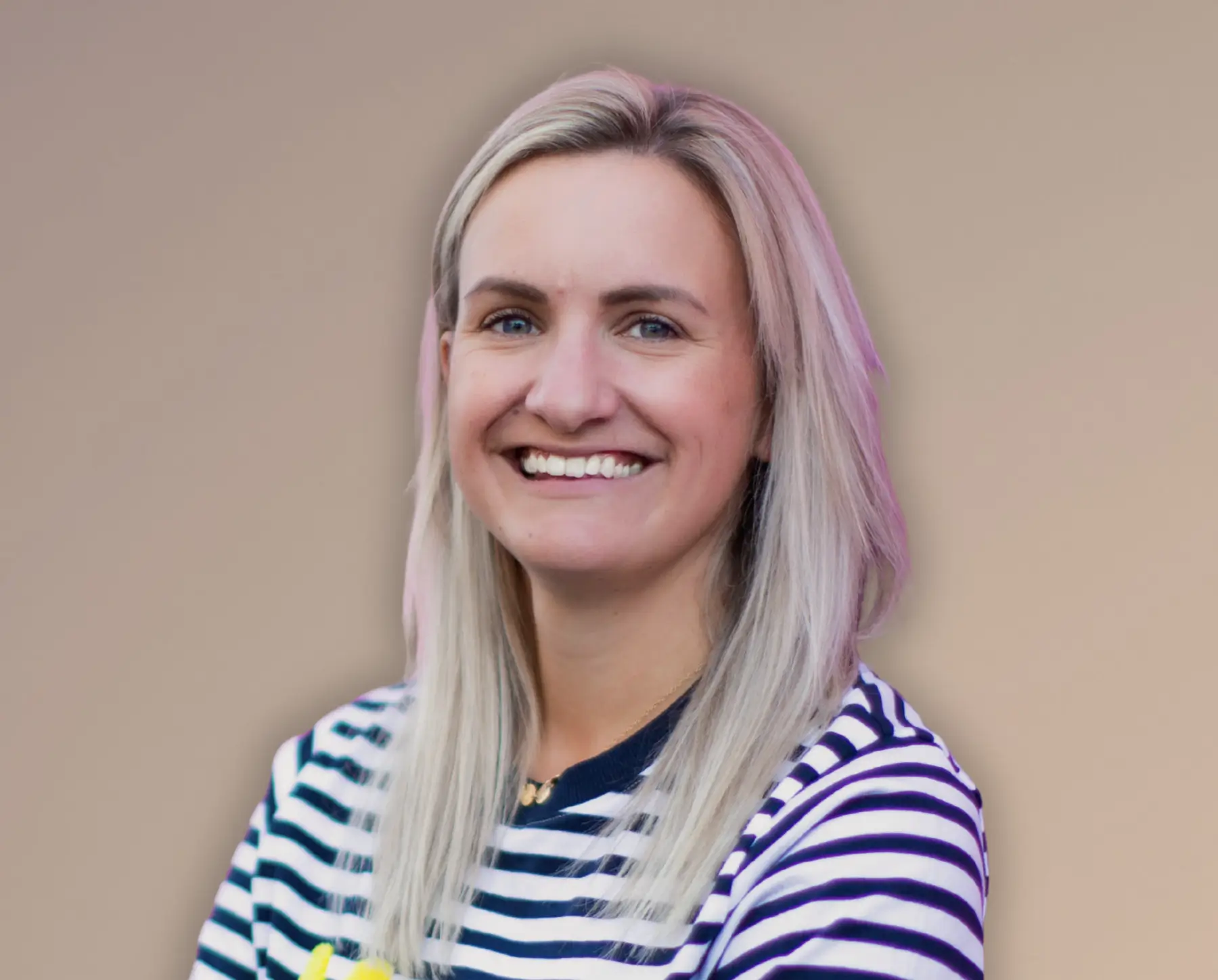
.avif)



.avif)
.avif)
.webp)


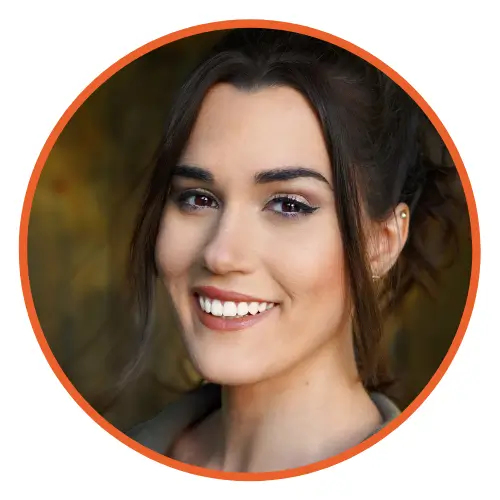

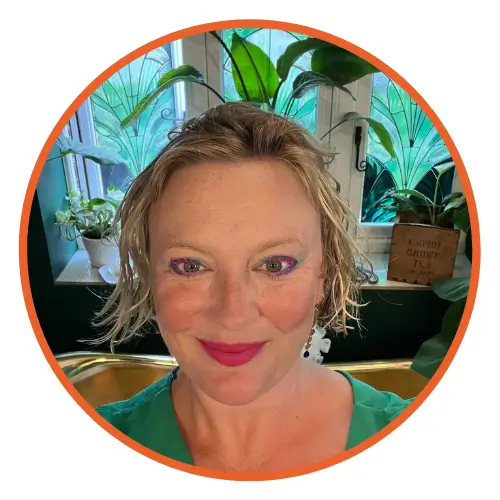
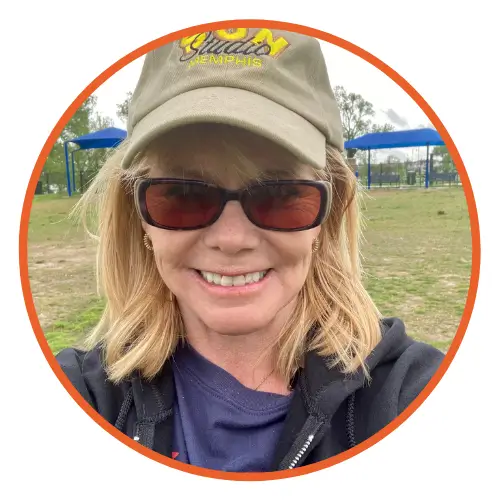
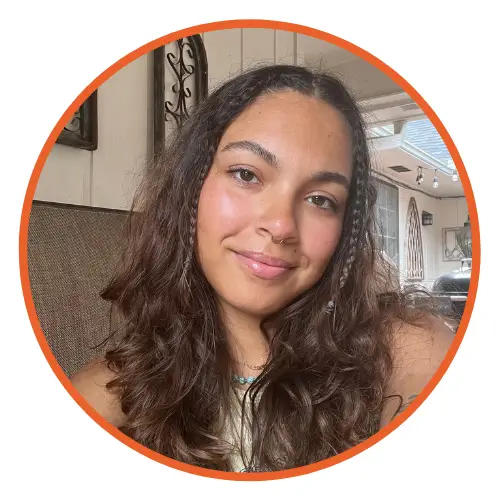

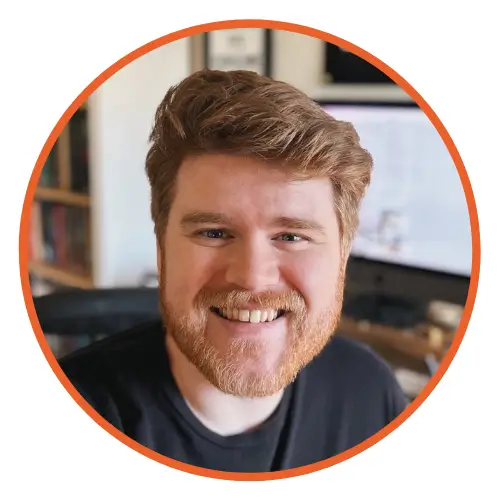

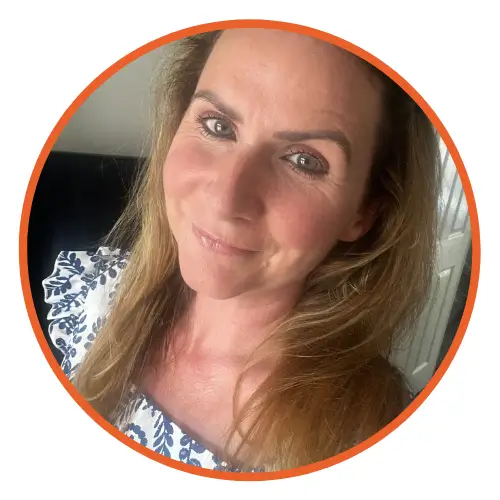
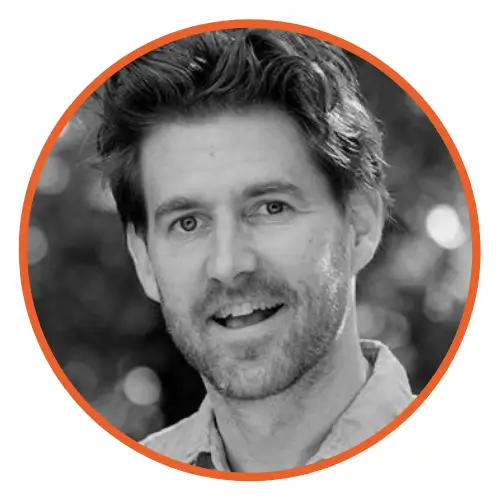
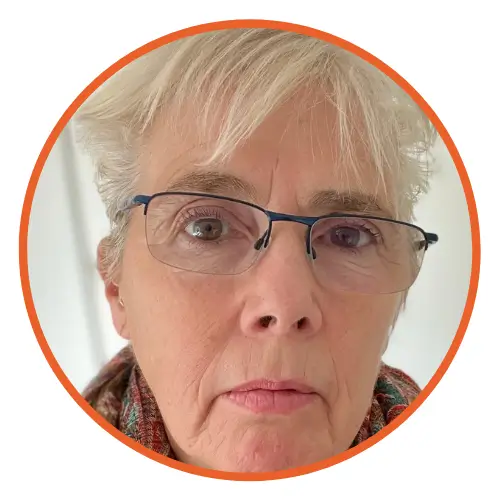


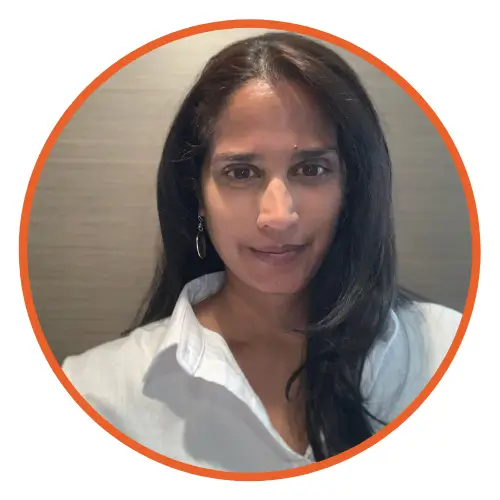
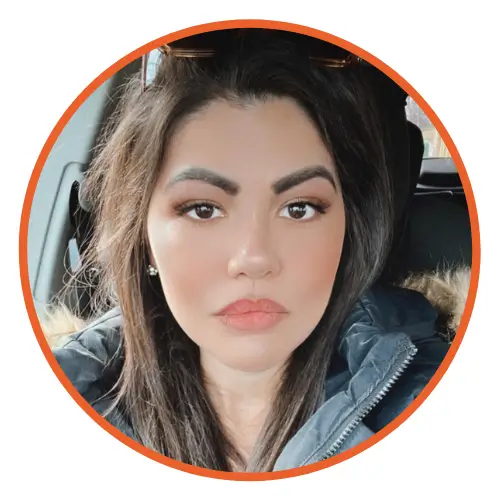





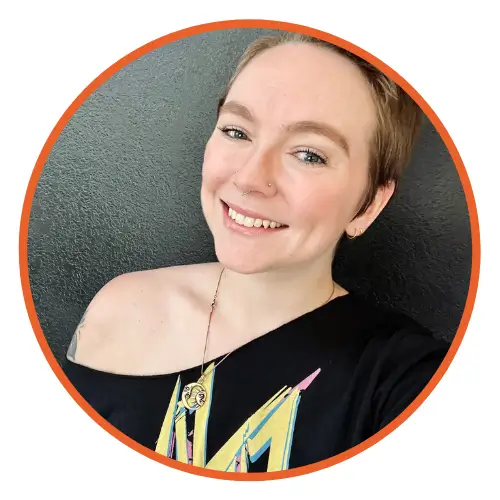


.avif)





.avif)
.avif)

%20(2).avif)






%20(1).avif)






